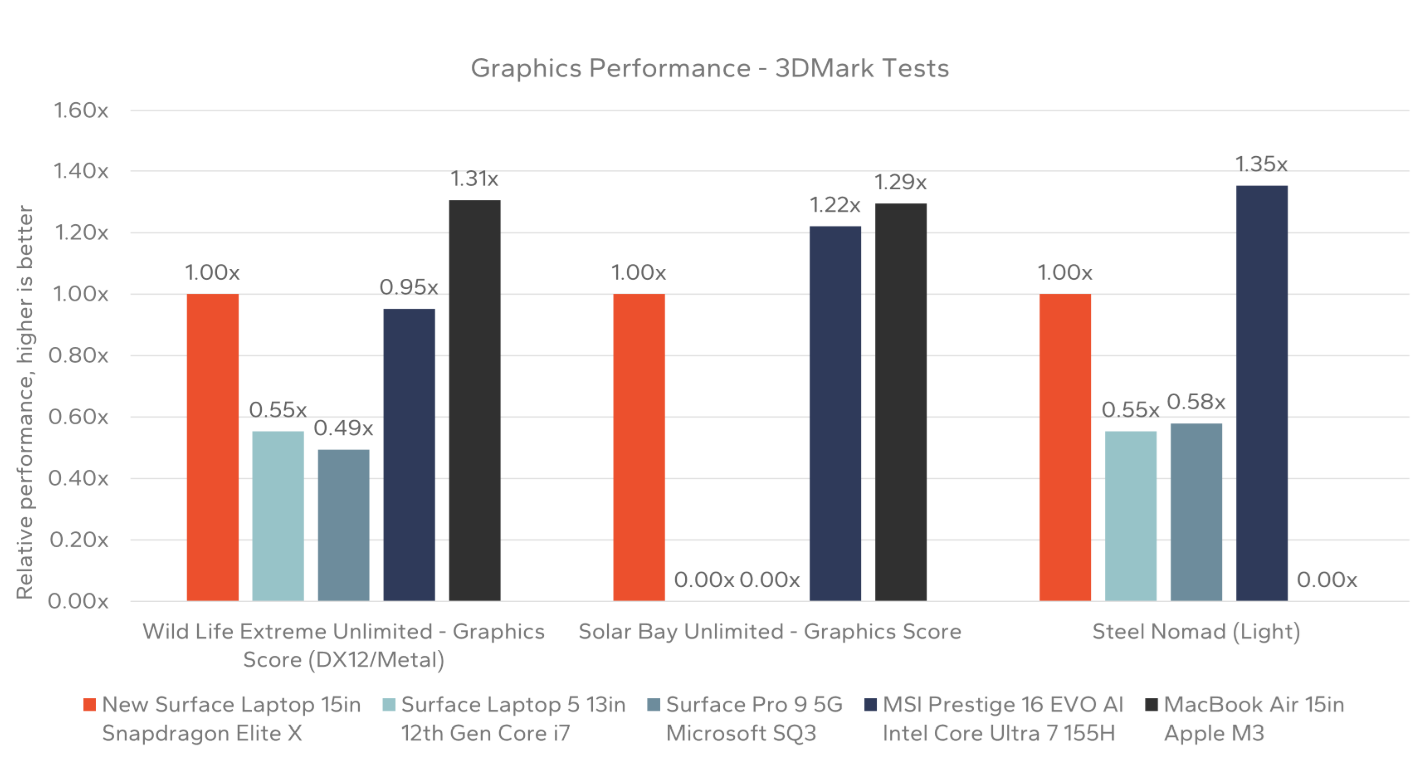In brief: Microsoft made a lot of bold claims about the Snapdragon X Elite-powered latest Surface laptop, including that it's up to 58% faster than Apple's M3 MacBook Air while offering excellent battery life. Now, a third party has put those claims to the test, and for the most part, they appear accurate. The caveat is that the review was paid for by Microsoft.

Signal 65's Ryan Shrout put the Snapdragon X Elite SoC through a series of tests and benchmarks to see if it lives up to the promises Microsoft made during its recent event introducing the Copilot+ PCs, including the latest Surface line.
The new Surface Laptop 7 with the Snapdragon X Elite SoC was compared against the older Surface Laptop 5 featuring an Alder Lake Core i7-1255U, a Surface Pro 9 with a Microsoft SQ3 chip, MSI's Prestige 16 AI EVO (Meteor Lake Core Ultra 7 155H), and an M3-powered MacBook Air 15.
Starting with thermals under load, the latest Surface laptop did run hotter than the Intel-powered Surface and the MacBook Air, but was cooler than the Prestige. In standard workloads, however, the Snapdragon X Elite laptop fared better. The MacBook Air was the best performer in all the thermal tests.
Microsoft says the new Surface laptops are incredibly quiet. That appears to be the case in the standard workload (Cinebench 2024 single-thread) test, where the X Elite machine was the quietest of all the laptops at 26.3 dB. The multithread test showed it was louder than the MacBook Air and previous-gen Surface.
Battery life, one of the elements of the new Copilot+ PCs that Microsoft says is outstanding, proved to be excellent in the two tests – video playback and Procyon. The new Surface Laptop powered by the Snapdragon X Elite had the longest battery life of any of the systems, though the MacBook Air wasn't tested in the Procyon battery test.
Moving on to performance, the Snapdragon X Elite came out top in multi-threaded performance in Cinebench and Geekbench, while the Apple laptop was slightly ahead in both benchmarks' single-threaded tests.
It should come as little surprise to see the Snapdragon X Elite decimating the other machines in the AI tests. The chip's 45 TOPS of NPU performance is a first, making it twice as fast as the SQ3 laptop and MacBook Air in the Procyon AI Computer Vision test.
Plenty of other tests were carried out, including graphics performance. The X Elite was around twice as fast as the two other Surface laptops, but Meteor Lake with its integrated Arc Graphics proved faster in a couple of 3Dmark tests. The MacBook Air was also faster in the Solar Bay Unlimited and Steel Nomad benchmarks.
Overall, the X Elite performed well, or even excellently, in many tests, though some are arguably not as earth-shattering as Microsoft suggested. It's also worth remembering that this review was commissioned by the Redmond company, so independent reviews will likely paint a more accurate picture.
Snapdragon X Elite-powered Microsoft Surface laptop tests show impressive results, with a caveat





